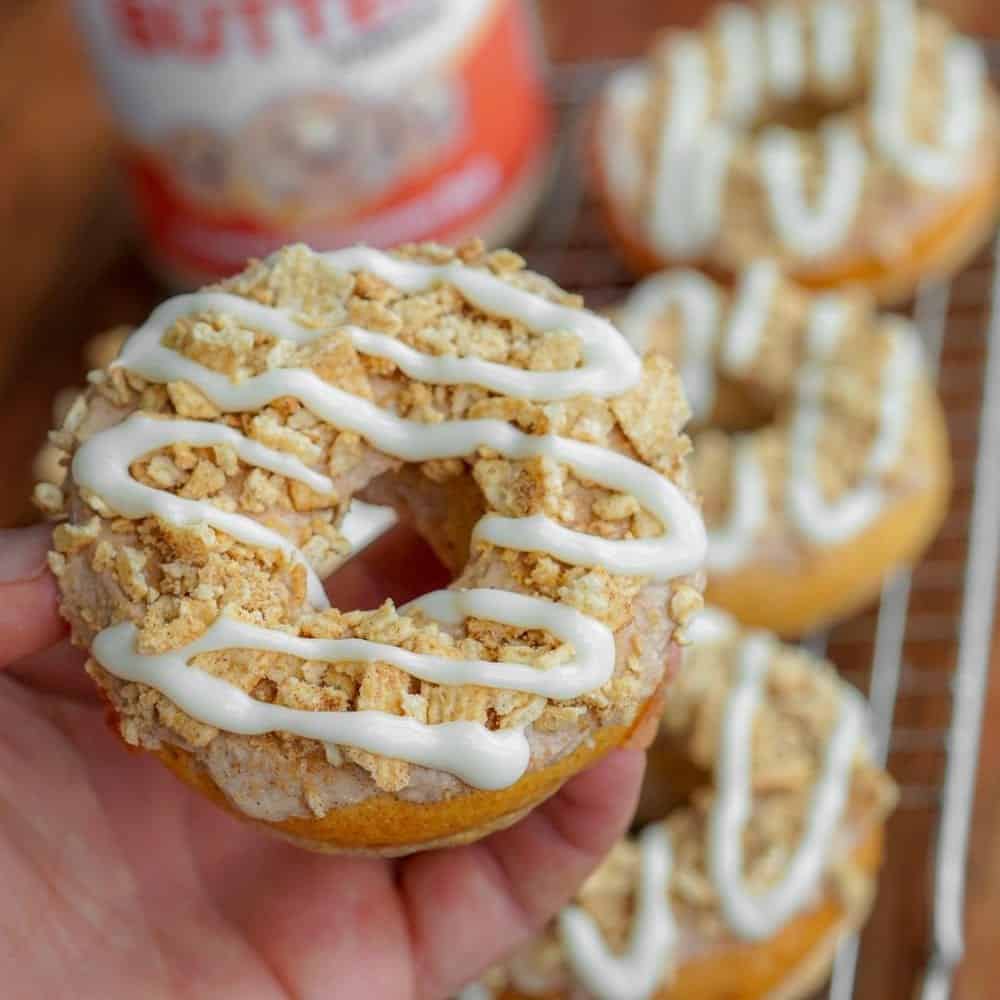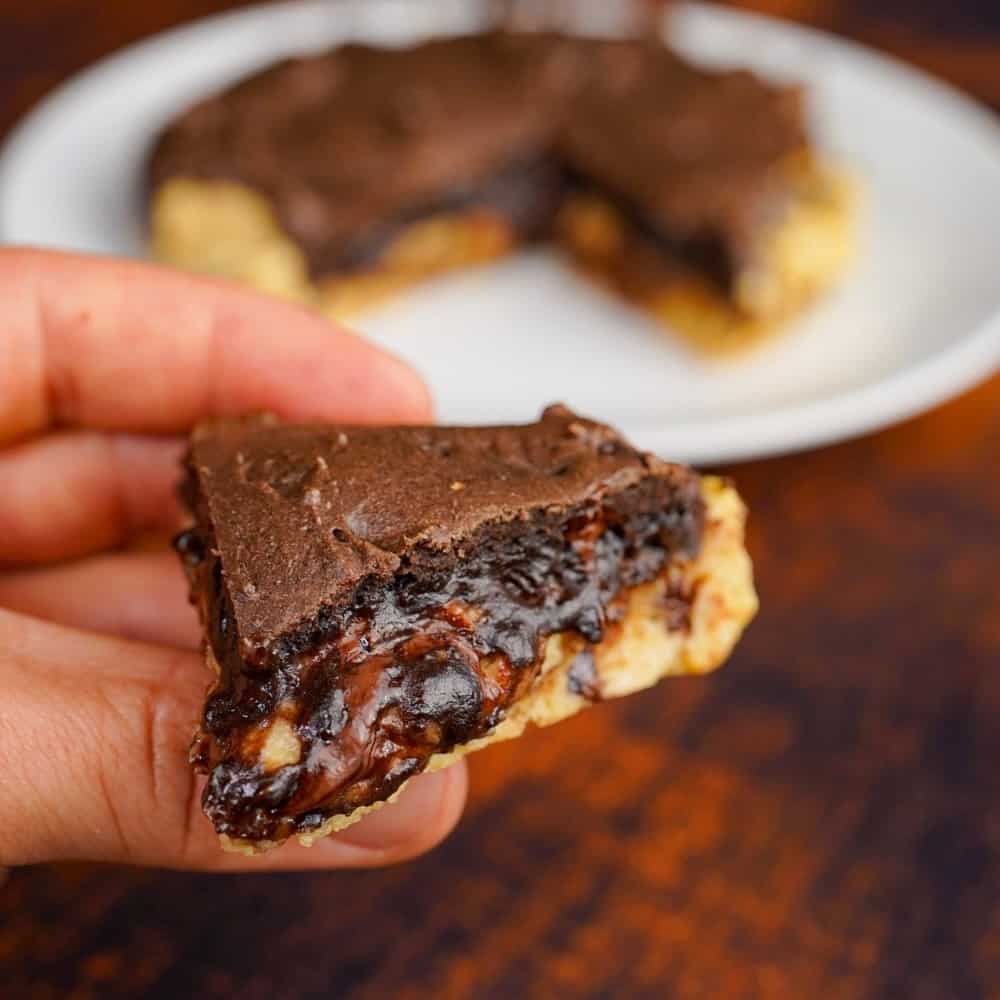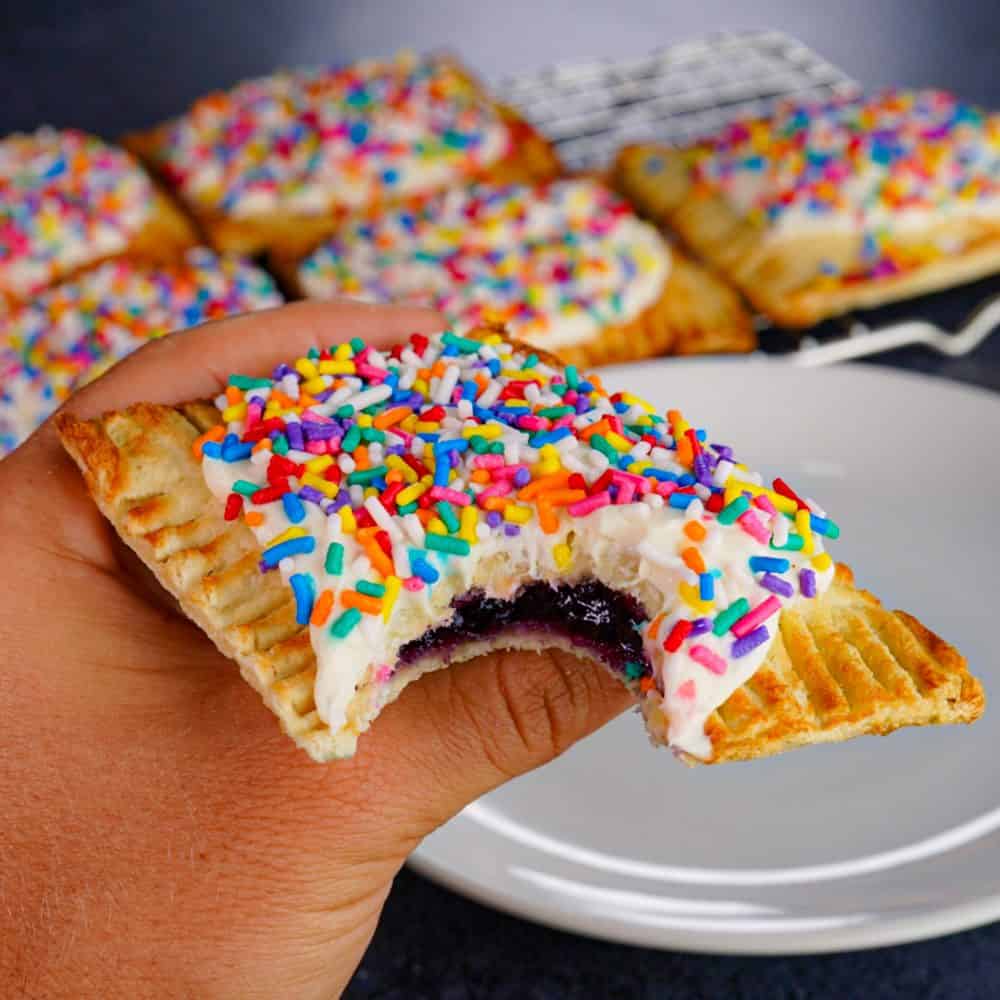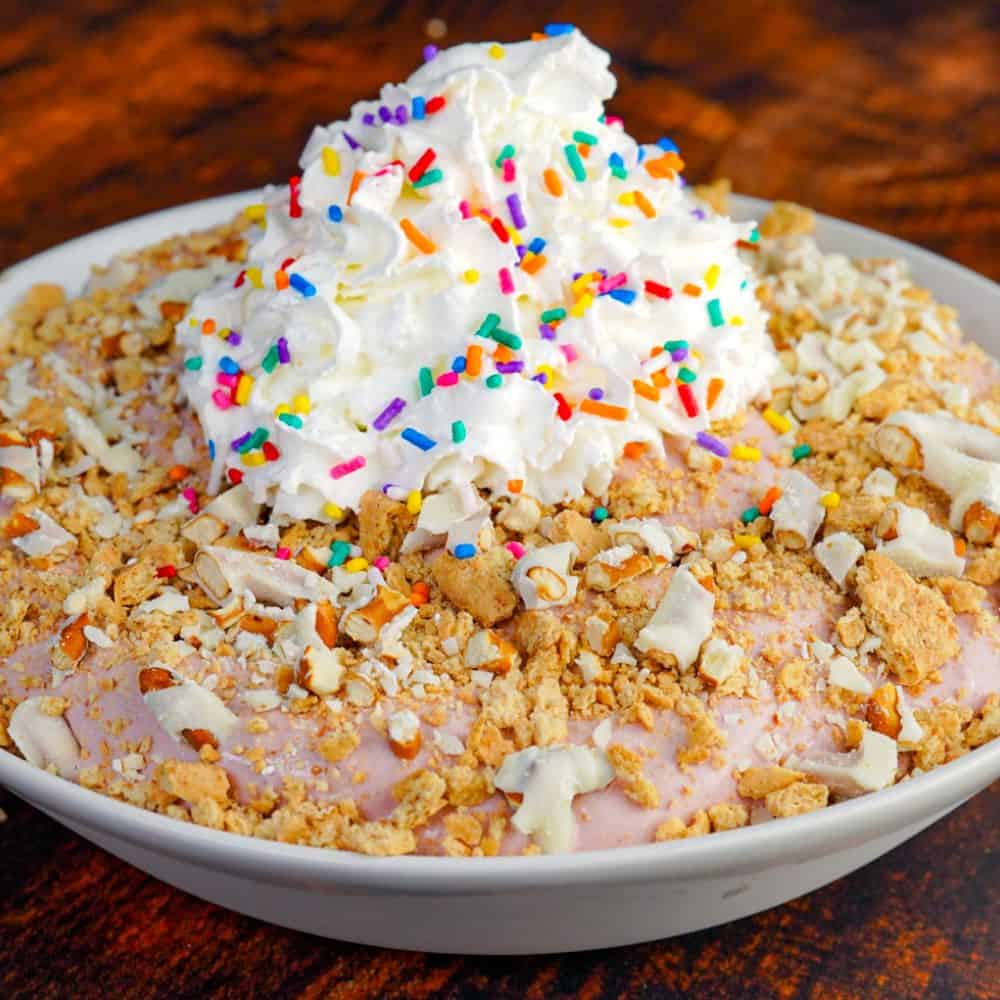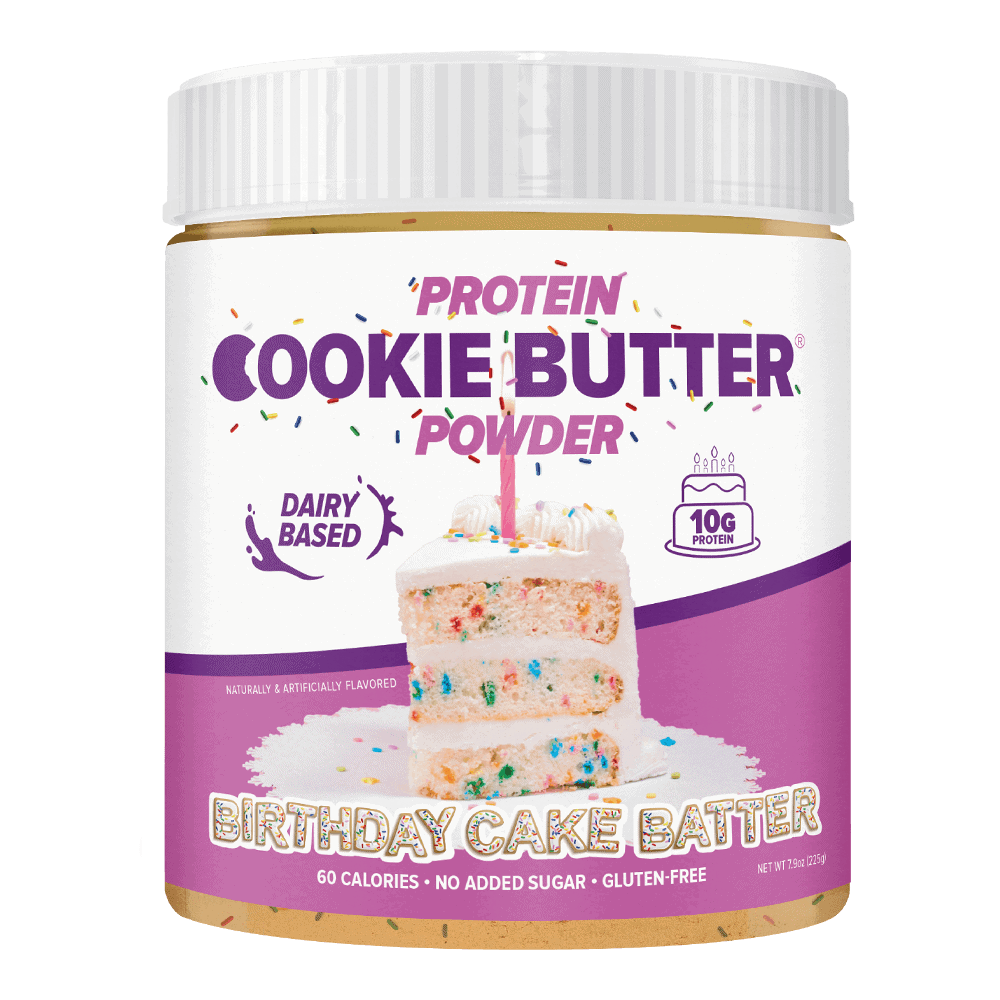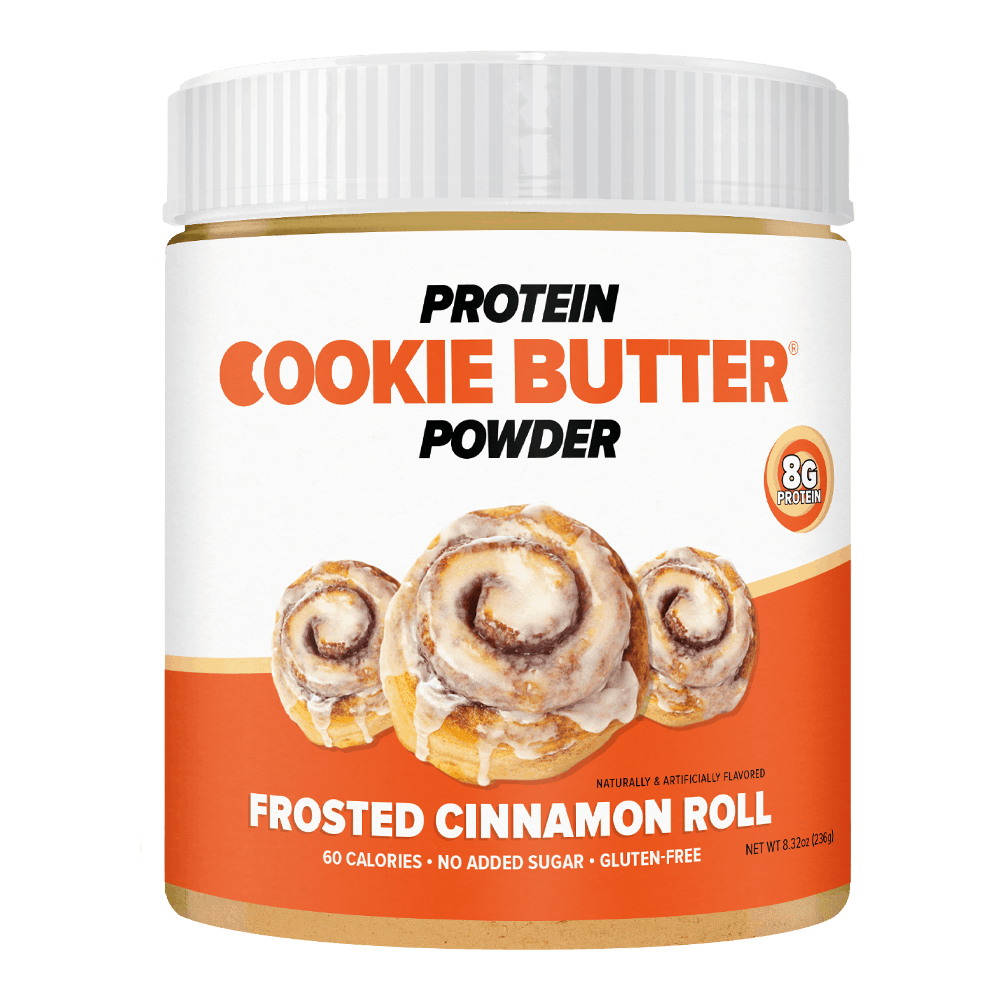Macro-Friendly: How to Eat a Ton Without Gaining a Ton!
I want you to think about when you go shopping at the grocery store. What is the first thing you do? You start looking for deals like BOGO, 50% off, Clearance, 10 for 10, etc. We all want to go to the store and get as much of the food we want for as little money as possible. Why spend more money that you have to!?
What am I getting at!? Well today I want to introduce to you a concept that is well known in the Flexible Dieting community called “Macro Friendly.”
In short, “Macro Friendly” is a category of foods that give you a lot food without taking away a lot of your macros. They in a sense give you the best bang for your buck.
So today I am going to teach you everything you need to know about how to maximize these “macro friendly” foods in order to make all the gainz you could ever want!!
What you will learn today
- What the heck is macro friendly?
- Why/when it is important?
- My macro friendly tool kit
- How to build your own macro friendly tool kit!
Macro Friendly? What the heck does that mean?!?
When we are counting our macros, we have a set number of protein, carbs, and fats we are supposed to hit for that day. These are our budget of macros.
Think of it just the same as your finances and how you have a certain budget for bills, food, and leisure. Same thing.
So what am I getting at? Well Macro Friendly is the same idea but with the foods we eat! We want to find foods that give us more/same/similar satisfaction for the least amount of macros possible.
- Full Fat per 13g serving (1 tbsp) = 90cals, 10g fat, 0g carbs, 0g protein
- Fat Free Mayonnaise 1tbsp (13g) = 10 cals, 0g fat, 2g carbs, 0g protein.
- For the same amount of Mayonnaise, you get 9 times the amount of calories!
- And let’s be honest, you’ll be using a whole lot more than just a tbsp of mayonnaise!
Why is this important?
1. More calories for the things you love
Because who wants to waste calories on things like full fat mayonnaise when you could use them on fun stuff like ice cream or even that extra glass of red wine you wanted!
It’s just like when you go to the store and save a bunch of money with the various deals which leaves you with more left over money to spend on the things you don’t necessarily need. Same principle goes with your diet.
Hell, you might love full fat mayonnaise and want to use your extra calories you’ve saved on that! I’m definitely not that person… But to each their own! I personally choose to use mine something sweet!
Like for example, I want to eat this ENTIRE Sl&*ty Brownie Cookie Skillet. I made this recipe with INSANE macros so I can eat the whole damn thing and FEEL AMAZING about it.
Macros for each Brownie (makes 4):
148 Cals, 13g Carbs, 4g Fat, 15g Protein
There’s really awesome deal if you want to see a whole lot more recipes like this.
2. More Food Volume
Because you are eating these foods with less calories for the same serving size, you can eat more of it for the same amount of calories.
What I mean by this is that say we both have 490 calories, 60g carbs, 10g fat, and 40g protein to make a meal with. My goal is to eat more total food volume than you even though we are both consuming the same amount of calories.
100g of Broccoli vs 1 Serving of Cooked Rice
For example, if you use vegetables like broccoli and green peppers instead of rice in your meal, you will get 10 times more volume for the about of calories. 1 serving of rice is around 37g carbs and gives you that amount of rice pictured above. Now if you were to eat 37g carbs worth of broccoli, you would have to eat more than 6 of those plate full of broccoli above.
I know you must be thinking, “Broccoli sucks though!” But if you are saying that, you have not sautéed your broccoli yet or tried cooking it in the air fryer!!!
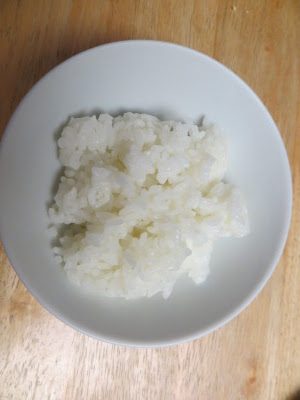
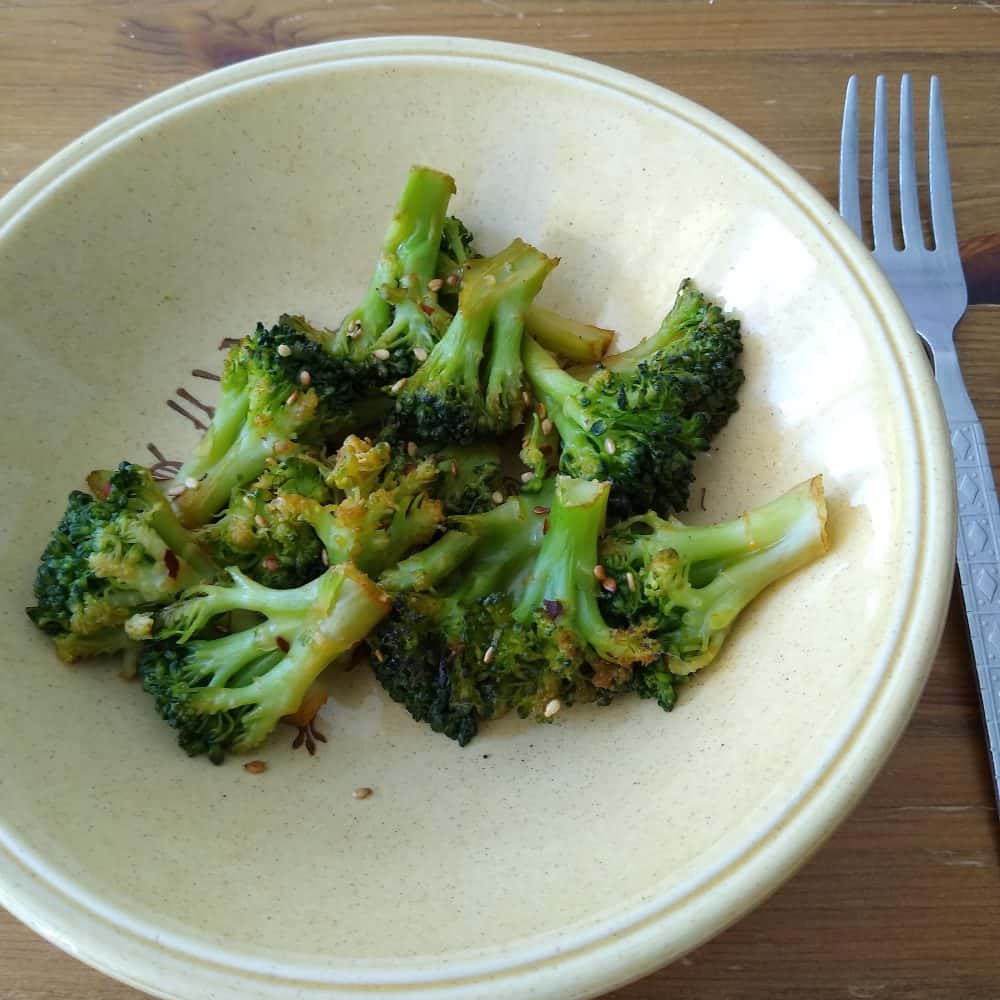
3. Increase Satiety (not as hunnnnngry)
I want you to think back to when you first started tracking macros and had that epiphany moment when you saw that the smores pop tart you were eating every morning for breakfast had 70g carbs.
Not only did you take a huge chunk of your carbs our before 8am, you were not ravenously hungry an hour later! This is a probably the best example of a non-macro friendly food.
But if you ate 70g carbs, why are you so hungry an hour later? Shouldn’t that amount of calories keep you full?
You don’t have to be HANGRY!
Pop tarts are a very dense source of calories. Meaning that you do not get much food volume for the amount of calories you are eating. Plus, they are digested really quickly because they are mostly sugar and thus will lead to you being hungry very shortly after.
Let me tell you a story real life story to help you understand this.
There was this monster called HUNGAA DA GIANT, who was the size of the state of Florida and wanted to eat everyone in sight!

So the U.S. Government had a budget of $7 billion to spend on an army. They could spend this budget on an army of 100 who would hold HUNGAA off for an hour or an army of 1,000,000 who would destroy HUNGAA.
With this super hard decision that would determine the fate of the world (sarcastic, of course they would choose 1,000,000), they chose the 1,000,000 men army and destroyed HUNGAA DA GIANT!
Ok what the heck am I talking about!? Lol don’t judge me, I have the imagination of a 5 year old!!
I use this example to show us how our hunger is HUNGAA DA GIANT and we have two options to fight him off with. One that is temporary like a pop tart, that is small in volume, very calorically expensive per g of food, and that gives us temporary relief.
Or like like my high protein Blueberry Pop Tart which is less calorically expensive, and give us a lasting relief of our hunger. I think the answer is pretty obvious.
Why is this important?
1. Cutting/Dieting/Trying to lose weight: Macros are low
- In order to lose weight, we must be in whats called a caloric deficit. Simply put, we need to eat less calories than what we burn. It all comes back to calories in vs calories out.
- If you want to lose weight, be a caloric deficit
- If you want to gain weight, be in a caloric surplus
- So if you were eating 2000 calories per day to maintain your bodyweight and needed to eat around 1700 calories to spur weight loss, you will want to find more macro friendly meals to make it seem like you are still eating the same amount of food as you were at 2000 calories. This is where macro friendly foods come into play.
2. Maintaining you current results/bodyweight
- So say you achieved great results and have lost all the weight you wanted and plan to keep the results you have achieved. Well macro friendly foods will help you maintain theses results by helping you stay in that calorie range to maintain your certain body fat % while not feeling deprived.
- Most people gain all the weight back from their diet because they achieved their desired results and then went back to eating un macro friendly foods. These foods had a much higher calorie content causing a big caloric surplus leading to all that weight being gained back.
- But this rarely happens with people who are flexible dieting they don’t feel deprived and can have any type of food they want at any time.
3. Not having to really worry about food
- If you are utilizing macro friendly foods most of the time, the chances of you gaining a ton of body fat are not very high.
- You will be utilizing foods that are not super dense in calories thus making it hard to over consume and losing all your results. You will be satiated and this will also leave discretionary/left over calories to eat those treats that the common folk would scold you for eating. But just lift up your shirt and show off your 6-pack and eat that ice cream while smiling at them.
The Macro Friendly Vs. The Not So Friendly
I wanted to compare a few more items we use on a daily basis that can be substituted with more macro friendly options without any sacrifice on your part!
Macro-Friendly Wraps
Josephs Lavash Breads vs. Chipotle
Large Flour Tortillas
- Josephs Lavash Breads: 100 cals per lavash, 14g carb, 4g fat, 10g protein, 6g fiber
- Chipotle Large Flour Tortillas: 300 Calories, 46g Carbs, 10g Fat, 7g Protein, 3g Fiber
So by using a Josephs Lavash Bread as the wrap for you meal, you are saving 200 calories, over 32g carbs, 6g fat, and getting 3g more protein and 2g more fiber. And the Lavash is bigger than the flour tortillas you would be getting too!
Other Macro Friendly options for Wraps/Tortillas are:
- Flatout Flatbreads: 100 Calories, 17g Carbs, 2.5g Fat, 9g Protein, 8g Fiber
- Le Bandarita Tortillas: 70 Calories, 15g Carbs, 2.5g Fat, 5g Protein, 9g Fiber
- Mission Extra Thin Corn Tortillas: 40 Calories, 8g Carbs, 0.5g Fat, 1g Protein
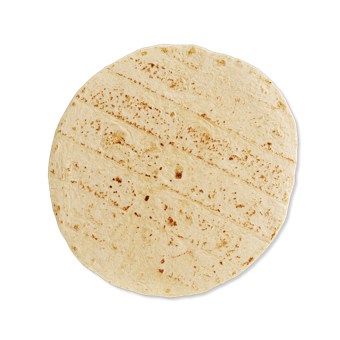
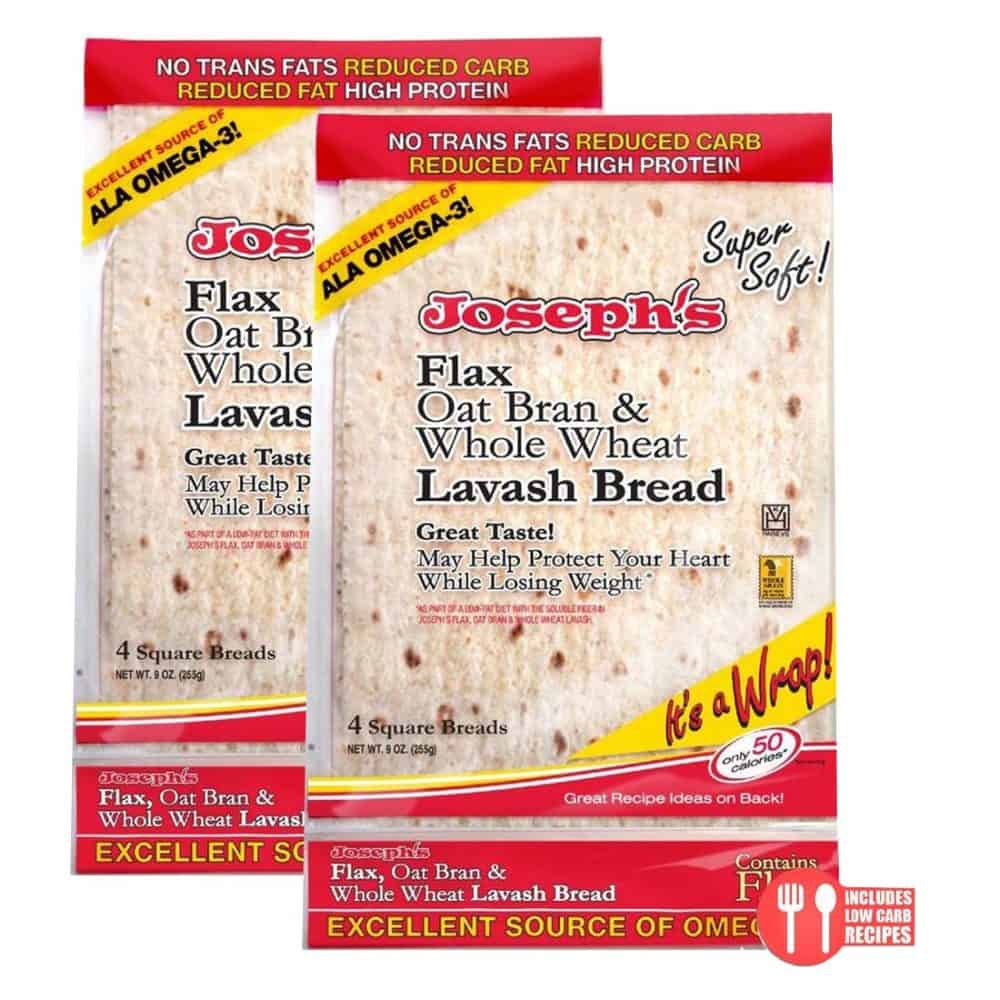
Breads:
- Natures Own Butter Bread vs. Pepperidge Farm Multi Grain Bread
- Natures Own Butter Bread: 60 calories, 12g carbs, 1g fat, 3g protein
- Pepperidge Farm Multi-Grain Bread: 120 cals, 22g carbs, 2g fat, 4g protein
So most people would think that the multi grain bread would be “healthier” but as you’ve learned reading my material, the real epidemic that is killing our country is excess calorie consumption. So the butterbread reigns supreme here because you could eat 2 slices of that bread for the price of 1 of the multi grain.
So if you were making a sandwich with the butterbread, 2 slices would give you 120 calories while 2 slices of the gulti grain would give you 240 calories! I’m going with the butterbread!
And because of this, I can use 2 slices to make a beautiful French Toast Burger under 30g carbs!
If I would’ve had with 2 slices of the multi grain, I would’ve had 44g carbs just from the bread!
Other Macro Friendly Bread Options:
- Sara Lee 45 Cal Bread: 45 Calories, 10g carbs, 0.5g fat, 2.5g protein
- Nature’s Own 40 cal bread: 40 calories, 9g carbs, 0.5g fat, 2.5g protein
- White Cheddar Rice Cakes: 45 cals, 8g carbs, .5g fat, 1g protein
Cherry Pie Cheesecake Chocolate Crunch Rice Cake!
Rice Cakes:
Plain Rice Cake vs. Bagel
- Quaker Plain Rice Cake: 30 cals, 7g carbs, 0g fat, 1g protein
- Pepperidge Farm Plain Bagel: 260 cals, 54g carbs, 1g fat, 9g protein
So by substituting in a 2 rice cakes instead of the standard bagel, you would save 200 cals and 40g carbs! Even if you chose 2 chocolate crunch rice cakes, then you would be still saving 140 cals and 30g carbs! You could also substitute one of the lighter bread options above as an alternative too!
Other flavors of rice cakes:
- Plain: 30 calories, 7g carbs, 0g fat, 1g protein
- White Cheddar: 40 cals, 8g carbs, 0.5g fat, 1g protein
- Buttered Popcorn: 35 cals, 8g carbs, 0g fat, 1g protein
- Apple Cinnamon: 50 cals, 11g carbs, 0g fat, 1g protein
- Caramel Corn: 50 cals, 11g carbs, 0g fat, 1g protein
Fat Free Cream Cheese vs Full Fat Cream Cheese
- Fat Free Cream Cheese: 25 calories, 2g carbs, 0g fat, 4g protein
- Full Fat Cream Cheese: 100 cals, 1g carbs, 9g fat, 2g protein
So even though their serving size is the same and both taste pretty identical, you would be saving 70 calories, and 9g fat if you go with the fat free version rather than the full fat. I’m all about value with my macros and honestly, they both tastes exactly the same to me. I use way more than 1 serving of cream cheese too to and calories start to really add up if you were to go with the full fat version.
Milk
Unsweetened Almond Milk vs. 2% Milk
- Unsweetened Vanilla Almond Milk: 30 cals, 2.5g fat, 1g carbs, 1g fat
- 2% Milk: 120 cals, 12g carbs, 5g fat, 8g protein
Cheese:
- Fat Free Cheese: 30 cals, 2g carbs, 0g fat, 8g protein
- Full Fat Cheese: 110 cals, 1g carbs, 9g fat, 7g protein
Greek Yogurt:
Dannon Light and Fit Vanilla Greek Yogurt vs. Chobani Vanilla Greek Yogurt
- 1 Cup (225g) Dannon Light and Fit: 120 cals, 13g carbs, 0g fat, 18g protein
- 1 Cup (225g) Chobani: 180 cals, 25g carbs, 0g fat, 20g protein
Other macros friendly greek yogurt options:
- Plain Non-Fat Greek Yogurt: 120 cals, 9g carbs, 0g fat, 23g protein
- Carb Master Vanilla Yogurt: 60 cals, 4g carbs, 1.5g fat, 8g protein.
Ice Cream:
- Edy’s Slow Churned 1/2 the Fat Cookie Dough Ice Cream vs. Ben & Jerry’s Cookie Dough Ice Cream
- Edy’s Cookie Dough: 130 calories, 3.5g fat, 22g carbs, 2g protein
- Ben & Jerry’s: 280 calories, 15g fat, 32g carbs, 4g protein
For the same 1/2 cup serving, Edy’s will give you half the amount of calories as the Ben & Jerry’s. What does this mean!? Well that means that you can eat twice as much Edy’s for the same price of calories as it would cost for the Ben & Jerry’s! Like Buy 1 Get 1 Free! Who doesn’t want more ice cream. Lets be honest here!
Other Macro Friendly Ice Cream Choices:
- Publix Low Fat Vanilla Frozen Yogurt: 100 calories, 1.5g fat, 18g carbs, 2g protein
- Halo Top
- Arctic Zero: 75 calories, 2g fat, 11g carbs, 2g protein. (They have 35 calories options as well. Beware though, these need a bunch of sprucing up with toppings to make them tasty)
- Breyers 1/2 The Fat Slow Churned Ice Cream
Ice Cream Bars:
- Weight Watchers Giant Chocolate Fudge Ice Cream Bar vs. Magnum Double Chocolate Bar
- Weight Watchers Bar: 100 calories, 1.5g fat, 20g carbs, 4g protein.
- Magnum Bar: 340 calories, 21g fat, 34g carbs, 4g protein (thats insane…..)
Other Macro Friendly Ice Cream Bar Choices:
- Weight Watchers Giant Cookies and Cream Bar: 130 calories, 4g fat, 24g carbs, 4g protein
- Yasso Greek Yogurt Chocolate Fudge Bar: 80 calories, 0g fat, 15g carbs, 6g protein (pick any flavor of these and they will be macro friendly)
Or you could just skip right ahead to making the most voluminous and delicious thing you’ve ever tried.
Meet my Funfetti Protein Frosty – yes it does taste JUST AS GOOD as the real thing.
Macros for the WHOLE Frosty: 253 Cals, 15g Carbs, 5g Fat, 37g Protein!
Vegetables
Green Vegetables are the most macro friendly. They give you the most bang for your buck. These include:
- Broccoli, Kale, Spinach, Peppers, Green Beans, Asparagus, Cucumber, Zucchini, Lettuce, Mustard Greens, Celery, Brussel Sprouts, and many more.
- Non Green Veggies (calories content a bit higher but not much): Carrots, Onions, Squash, Mushrooms, and Tomatoes.
And the main objection I’ll get is, “But Zach, vegetables taste like crap!” My response, “Of course they taste like crap when you steam them! Never steam your veggies ever again!”
Pro-tip: Just throw in a pan and sauté them up with salt, pepper and any other seasoning you’d like. I like to use creole seasoning as well to give it a kick. If you have some fats to spare, use some butter or olive oil but if you don’t, just use some non stick olive oil spray on the pan which will help add some flavor as well.
Fruits
Strawberries vs. Banana
- Strawberries per 100g: 30 calories, 0g fat, 7g carbs, 1g protein
- Banana per 100g: 90 calories, 0g fat, 23g carbs, 1g protein
Other Macro Friendly Fruits:
- Blueberries per 100g: 50 calories, 0g fat, 14g carbs, 0g protein
- Raspberries per 100g: 50 calories, 0g fat, 14g carbs, 0g protein
Whole Protein Sources: The Leaner The Better, Not All Are Created Equal
1. 93/7 Lean Ground Beef vs. 70/30 Lean Ground Beef
- 93/7 Lean Ground Beef: 170 calories, 8g fat, 0g carbs, 23g protein
- 70/30 Lean Ground Beef: 380 calories, 32g fat, 0g carbs, 16g protein
That should look insane to you…. You are eating the same amount of meat, but you are getting 210 more calories, 24g fat extra and 7g protein less. You are getting ripped off! That’s the equivalent of you going to a Kia dealership and them trying to sell you a Sorento for $100,000
I apologize if you drive a Kia….. It just fit too perfectly with my analogy 🙂
Great Lean Meat Choices:
- Boneless, Skinless Chicken Breast
- 93/7 Lean Ground Turkey or Pork:
- Bison
- Turkey Bacon
- Egg Whites or Egg Substitute vs. Whole Eggs
- Whole Large Egg: 60 calories, 5g fat, 0g carbs, 6g protein.
Yes, Whole Eggs are fantastic and are a great source of dietary fat but they don’t give the ratio of protein to fat that is to warrant having more than 2-3 in a meal.
For example, if my macros call for me to hit 200g protein and 80g fat per day.
That’s more than a 2:1 ratio of protein to fat so if you tried to get 42g of protein from whole eggs, you’d be consuming 7 whole eggs and getting 35g fat along with it which would total 420 calories just from eggs.
But if you had just 2 whole eggs and 6 egg whites, then you’d be saving 25g fat and 225 calories! And you’d be eating the same amount of volume!
Chunk Light Tuna in Water (1 can) : 100 calories, 0g fat, 0g carbs, 22g protein.
Tuna is such a convenient and great protein source that I use a lot!
Rice
- 1 Cup Brown Rice Cooked: 220 cals, 1.5g fat, 46g carbs, 4.5g protein
- 1 Cup Cauliflower Rice Cooked: 30 calories, 0g fat, 5g carbs, 2g protein
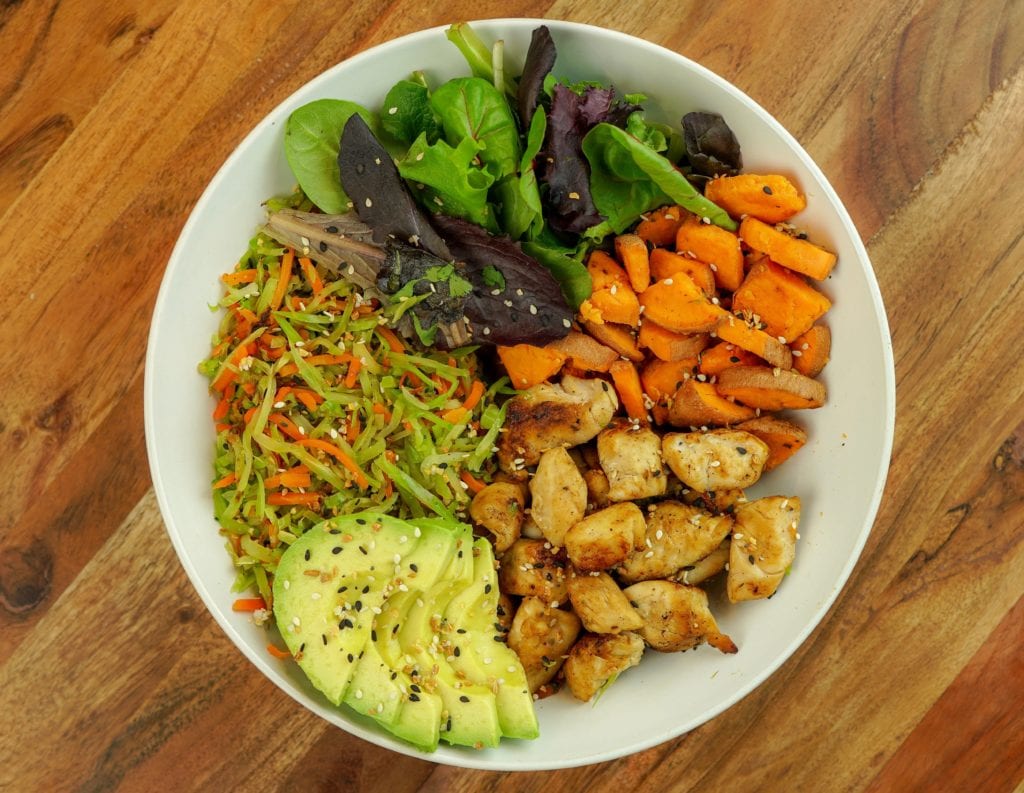
Pasta Products: Macro-Friendly vs Not So Much
Low Carb Spaghetti & Stuffed Meatballs!
1. Spaghetti Squash vs. Spaghetti
- Spaghetti Squash (1 cup cooked): 40 calories, 0g fat, 9g carbs, 1g protein
- Ronzoni Healthy Harvest 100% Whole Grain Spaghetti (1 cup cooked): 180 calories, 2g fat, 41g carbs, 7g protein
- So you could literally have 4.5 servings of Spaghetti Squash to equal the amount of calories in 1 measly serving of the Ronzoni Spaghetti.Other Macro Friendly Pasta Sources:
- Shirataki Noodles per 1 cup cooked: 20 calories, 0g fat, 5g carbs, 0g protein
Nut Butter? Maybe not so macro-friendly
1. Protein Cookie Butter vs. Regular Peanut Butter
- Protein Cookie Butter (per TBS): 8g protein, 1g fat, 1-2g carbs
- Skippy All Natural Smooth Peanut Butter (per 36g): 240 calories, 19g fat, 10g carbs, 5g protein.Same volume but saving you a whopping 15g fat and 90 calories while giving you an extra 10g protein. Can’t beat that!
- Around 8-10g protein serving and only 60 calories.
- An incredibly delicious way to make your favorite snacks more high protein.
- Perfect on top of rice cakes, pancakes, or waffles. Works amazing mixed into yogurt, oatmeal or added to smoothies.
- Beware: The protein bar market is cluttered with so many different products that are just like candy bars or use terrible sources of protein.
Popcorn vs. Potato Chips
- Popcorn (1 cup popped): 30 calories, 0.5g fat, 6g carbs, 1g protein
- Lay’s Baked Potato (1 cup): 135 calories, 2.5g fat, 25g carbs, 2g protein
Macro-Friendly Sauces
1. On The Border Queso vs. Regular Queso
- On The Border Monterey Jack Queso (2 tbsp, 34g): 45 calories, 3g fat, 4g carbs, 1g protein
- Standard Queso (per 2 tbsp, 34g): 120 calories, 11g fat, 3g carbs, 2g protein
2. Sugar Free Pancake Syrup vs. Regular Pancake Syrup
- Cary’s Sugar Free Low Calorie Pancake Syrup: 20 calories, 0g fat, 5g carbs, 0g protein
- Aunt Jemima All Natural Maple Syrup: 210 calories, 0g fat, 52g carbs, 0g protein
Ok that’s just absurd…. I honestly can’t even tell the different between the two and to think that I’d be wasting 190 calories and 47g carbs on some nonsense like that. And it can get even more ugly if you use more than 1 serving which almost everyone does! I know I sure do.
3. Bolthouse Farms Ranch vs Hidden Valley Full Fat Ranch
- Bolthouse Farms: 45 calories, 3g fat, 3g carbs, 1g protein
- Hidden Valley: 145 calories, 15g fat, 2g carbs, 0g protein
Other Macro Friendly Sauces:
- Franks Red Hot Buffalo Sauce: 0 cals
- Sriracha Sauce (5g): 5 calories, 0g fat, 1g carbs, 0g protein
- Walden Farms Zero Calorie Sauce and Dips
- I Can’t Believe It’s Not Butter Spray: 0 cals
Macro Friendly Cereal Versus Not So Friendly
1. Puffed Kamut vs. Quaker Natural Granola
- Puffed Kamut per 1/2 cup: 0g fat, 5g carbs, 1g protein
- Quaker All Natural Granola per 1/2 cup: 225 calories, 6g fat, 40g carbs, 5g protein
So most people use granola or cereal as a topping on their yogurt or ice cream for that added CRUNCH! But they don’t know that you can get that same CRUNCH while saving 200 calories, 35g carbs, and 6g fat! That granola was a sneaky bandit of your macros.
Other Macro Friendly Cereals:
- Any Puffed Cereal: Puffed Rice, Puffed Millet, Puffed Corn.Pro tip: Add a mix of regular cereal for the flavor with the puffed cereal which will provide the volume. So now you have the best of both world while not emptying the macro bank!
Other Macro-Friendly Options
Sugar Free Jello:
There really is no comparison with Jello so I’ll just give you the facts! It’s such a game changer for when on poverty macros:
No Bake Chocolate Chip Cookie Dough Protein Jello Cheesecake!
Sugar Free Jello: 20 cals, 0g fat, 0g carbs, 4g protein
- You can literally top your jello with anything that you’d like. Greek yogurt, Ice cream, Protein Pudding, Peanut Butter, etc. The possibilities are endless!
Soda:
- Diet Mountain Dew vs. Regular Mountain Dew (Made with real sugar…lol)
- Diet Mountain Dew: Virtually Zero Calorie
- Regular Mountain Dew per 16oz bottle: 240 calories, 0g fat, 62 carbs, 0g protein
- Zevia
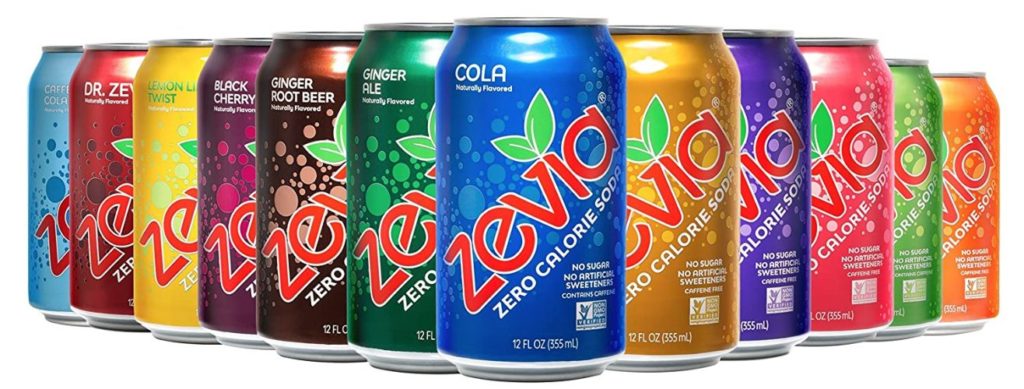
And before I get harassed with comments about how Diet Soda is worse than full sugar soda, click this link to get all the info you need about why Diet Soda has to be consumed in extreme excess to have negative effects in the body.
They gave the amount of artificial sweeteners that is in a can of soda to rats and derived the negative effects to be equivalent of if a human were to drink the same amount.
Well first off, that is a terrible conclusion of the information derived in the study because rats are so small relative to a human so this amount of artificial sweeteners would be comparable to us consuming diet sodas in the 10+ range per day!
Sweetners:
1. Sugar Free/Fat Free Pudding Mix:
I literally use this stuff for everything. I put it in my plain greek yogurt to give it flavor. Also add it to almost anything I want to add some thickness and flavor to.
2. Stevia: Of course stevia is a wonderful option instead of the typical sugar. No comparison needed here.
Same Meal, Totally Different Macros
Ingredients for our Buffalo Ranch Burgers:
- Burger
- Buns
- Ground Beef
- Cheese
- Lettuce
- Tomato
- Buffalo Sauce
- Ranch
Burger #1: The Macro Friendly Burger
- Arnold Multigrain Sandwich Thins: 100 calories, 1g fat, 21g carbs, 4g protein
- 4oz Wal Mart 93/7 Lean Ground Beef: 170 calories, 8g fat, 0g carbs, 23g protein
- 1/2oz Kraft Fat Free Sharp cheddar cheese: 25 calories, 0g fat, 1g carb, 4.5g protein
- Shredded Lettuce: 4 calories, 0g fat, 1g carbs, 0g protein
- 1 slice tomato: 8 calories, 0g fat, 2g carbs, 0g protein
- Franks Red Hot Buffalo Sauce: 0 calorie
- 1 tbsp Bolthouse Farms Ranch: 25 cals, 1.5g fat, 1.5g carbs, 1g protein
Macros for Macro Friendly Burger: 368 calories, 10.5g fat, 26.5g carbs, 32.5g protein

Burger #2: The Un-Macro Friendly Burger
- Pepperidge Farms White Hamburger Roll: 140 calories, 2g fat, 26g carbs, 6g protein
- 4oz Wal Mart 70/30 Lean Ground Beef: 380 calories, 32g fat, 0g, 16g protein
- 1/2 oz Sharp Cheddar Cheese: 55 calories, 4.5g fat, 1g carbs, 3.5g protein
- Shredded Lettuce: 4 calories, 0g fat, 1g carbs, 0g protein
1 Slice tomato: 8 calories, 0g fat, 2g carbs, 0g protein - 1 tbsp Buffalo Wild Wings Buffalo Sauce: 50 calories, 5g fat, 2g carbs, 0g protein
- 1 tbsp Hidden Valley Ranch: 75 calories, 7.5g fat, 1g carb, 0g protein
Macros for Un-Macro Friendly Burger: 712 calories, 51g fat, 33g carbs, 25g protein
Your mind should be absolutely baffled right now….. The same exact burger but one with twice as many calories and 5 times as much fat…
If you have ever eaten out at a standard burger joint, this is what you would be getting. Do you see how you are getting robbed on your macros! You could have the same burger for half the amount of calories, and with more protein!
How Do You Find These Macro Friendly Tools?
Step 1: Pick something you eat on a daily basis. This could be literally anything from a protein source to just a sauce that you use. Just pick one.
Step 2: Write down the nutritional information before you go to the grocery store and then try and find the same thing but with less macros.
Step 3: Do this every time you go to the grocery store and try to find at least 1 new macro friendly substitute to add to your tool kit.
Finding The Good Medium
It all comes back to hitting your macros. In my add my first flexible dieting post link, I introduced the 80-20 rule, that 80% of our diet should come from minimally processed, high quality, nutrient dense foods. Then 20% is discretionary calories that we can use of lower quality sources of foods. Covered this also in my interview with world renowned Precision Nutrition Coach Ryan Andrews where he agreed that these discretionary calories are highly underutilized and are what make a diet sustainable.
Just because something is low-fat, does not mean it is low quality. If someone were to eat the full fat version of all foods, then they would be taking in wayyyy too much dietary fat.
If, for example, when cutting am around 45-50g fat per day relative to around 200-300g carbs.
I am a strength athlete and train hard so carbs allow me to train hard. Too much dietary fat makes me feel slow and sluggish because of how slow it is digested so I prefer carbs.
Now if you are someone who does more low intensity training or prefers a higher fat diet, then you would most definitely use more full fat versions of foods and more of the lower carb versions as well.
I am the opposite so I am able to utilize more of the moderate to high carb options and the lower to moderate fat options.
Like I promote, it all comes down to your lifestyle and your individual needs. There is not one-size-fits-all diet. We are all different and respond differently to ratios of macronutrients.
But never forget the fact that it all comes back to calories in vs calories out. If you need to lose weight, then you need to create a caloric deficit.
So if you are eating the full fat version and not the fat free or even low fat version, you are still eating the same food volume, but eating up to 9-10 times more calories. That adds up very quickly and can be the difference between you gaining 10lbs and losing 10lbs in the span of a 1-2 months.
And that’s it! That’s the gist of “macro-friendly!” Hopefully you found this information helpful and help you realize you can EASILY eat the foods you want when you are even a little more conscious about what the macro/calorie break down is!
Want To Maximize Your Efforts and Results? Then You HAVE TO Check Out…
Use the code “2021” at checkout to save on your order
